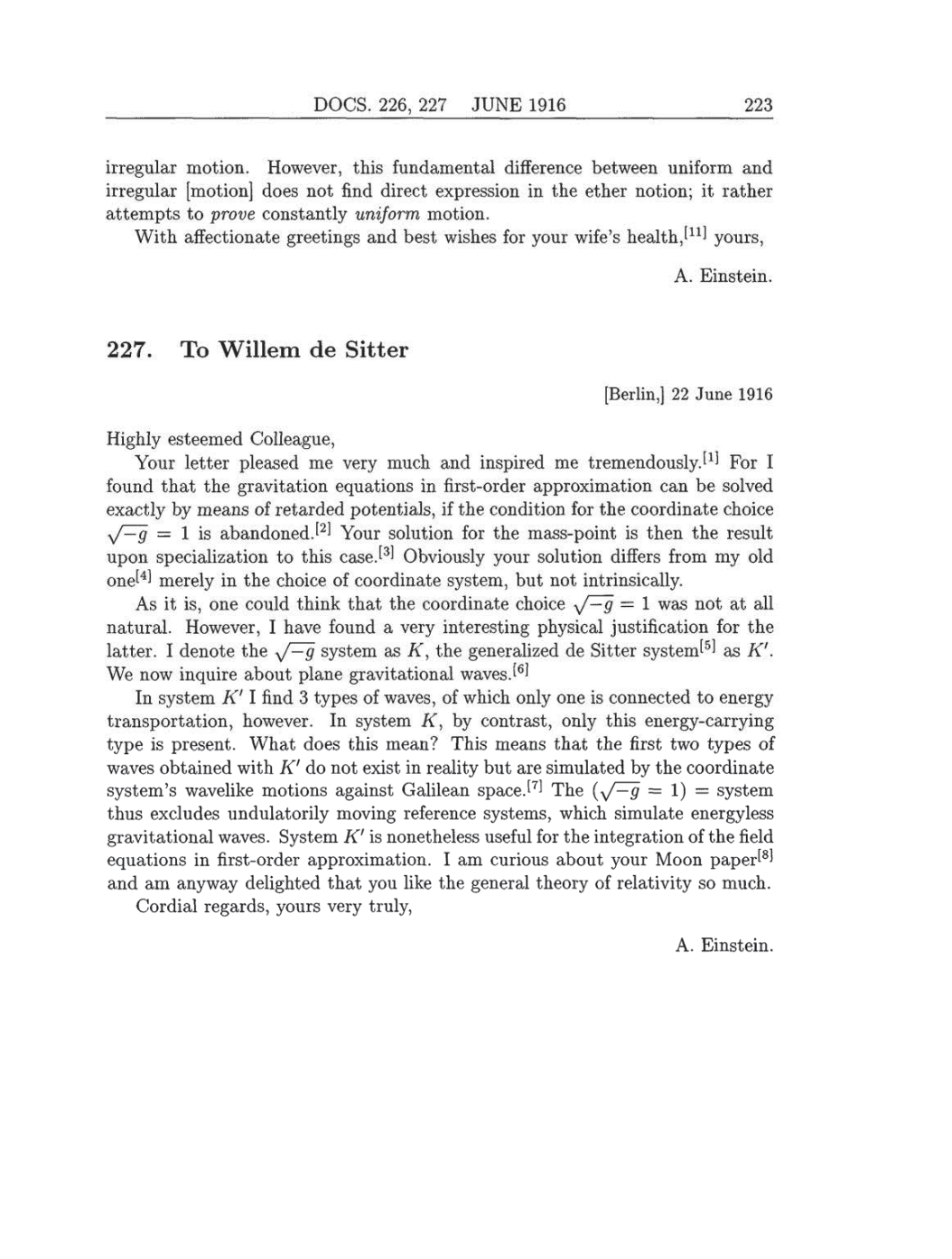DOCS.
226,
227
JUNE
1916 223
irregular
motion.
However,
this fundamental
difference
between uniform
and
irregular
[motion]
does
not
find direct
expression
in
the ether
notion;
it rather
attempts to
prove
constantly
uniform
motion.
With
affectionate
greetings
and best wishes for
your
wife’s
health,[11]
yours,
A.
Einstein.
227. To
Willem
de
Sitter
[Berlin,]
22
June
1916
Highly
esteemed
Colleague,
Your letter
pleased me very
much and
inspired me
tremendously.[1]
For
I
found
that the
gravitation
equations
in first-order
approximation
can
be solved
exactly by
means
of
retarded
potentials,
if the condition for
the
coordinate choice
V-g
=
1
is abandoned.[2]
Your solution for
the
mass-point
is
then
the
result
upon specialization
to
this
case.[3] Obviously
your
solution differs from
my
old
one[4] merely
in
the
choice of
coordinate
system,
but
not
intrinsically.
As
it
is, one
could
think that
the coordinate
choice
V-g
=
1
was
not at
all
natural.
However,
I
have found
a
very interesting physical justification
for
the
latter.
I
denote
the
V-g
system
as
K,
the
generalized
de
Sitter
system[5] as
K'.
We
now inquire
about
plane gravitational
waves.[6]
In
system
K'
I
find
3 types
of
waves,
of
which
only one
is
connected to
energy
transportation,
however. In
system
K,
by
contrast,
only
this
energy-carrying
type
is
present.
What
does this mean? This
means
that
the first two
types
of
waves
obtained
with
K'
do
not
exist in
reality
but
are
simulated
by
the coordinate
system’s
wavelike
motions
against
Galilean
space.[7]
The (V-g
=
1)
=
system
thus
excludes
undulatorily
moving
reference
systems,
which simulate
energyless
gravitational
waves.
System
K'
is
nonetheless useful for
the
integration
of
the
field
equations
in first-order
approximation.
I
am
curious
about
your
Moon
paper[8]
and
am
anyway delighted
that
you
like
the
general theory
of
relativity
so
much.
Cordial
regards,
yours very truly,
A. Einstein.
